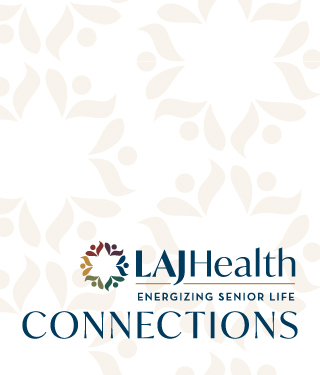Thousands of Miles from Where They Were Born, These Seniors Found Their Way Home


Thousands of Miles from Where They Were Born, These Seniors Found Their Way Home
At the Los Angeles Jewish Home, every resident has a rich and unique story. From diverse backgrounds and points of origin, they come together to create an exceptional community of seniors able to take advantage of a wide array of programs and services, and to maximize their enjoyment of each new day.
Toby and Clara Silnik together are a case in point. Natives of Argentina, where Toby worked as a jeweler and Clara as a photographer, the Silniks left Buenos Aires for New York in 1963 in search of better economic opportunities. They settled in Queens, which served as their home base for over a decade—until, in 1975, they were ready for warmer weather and moved to sunny Southern California.
In Los Angeles, Toby continued to ply his craft in jewelry making, while Clara pivoted, enrolling in business school, and ultimately working for a broad range of companies across the city. The pair lived a happy and fulfilling life in the San Fernando Valley and grew older together, appreciating each other's companionship and marveling at how far they had come from their South American roots.
Eventually, living on their own grew harder. Clara, now 87, was afflicted with significant back pain and was unable to be on her feet for long periods of time, making cooking and keeping a house difficult. Toby, 91, had also slowed down, and they decided to make a move to the Jewish Home, which they had driven by for years on their way to and from their home in Northridge.
"We liked the Jewish Home from the very first moment," Toby recalls of their move, which took place seven years ago. "We didn't have anyone—most of the people we knew, including our siblings in Argentina, had died—and the people at the Home took us in and were so welcoming."
Clara echoes her husband's sentiments. "We're very happy here. Toby and I are both very busy—I knit things that are sold in the arts and crafts studio and Toby designs and makes beaded jewelry for sale to raise money for the Home," she says. "And we love the residents of our building; everyone at the Jewish Home is like family."
Adrienne Berman is a newer member of the Jewish Home family, having only recently relocated to the Home in December. At 89, she is thrilled to have landed at the Home, though her own journey, like the Silniks', began far away.
Born in England to an Anglican family, Adrienne always had the spirit of a wanderer. As a young adult, she moved to Paris to learn French, but her adventures ended up taking her further afield.
"I always knew I wanted to get to America," she says. "After traveling through Canada for a year and a half with friends, I headed south to Los Angeles." She loved the city and the lifestyle, and when the time came for her to return to London, she went half-heartedly. Yet, she soon found a job as part of an American film crew shooting on location, and a producer and his wife took her under their wing and brought her back to the States for good.
Back in California, Adrienne met and married Bayard Berman ("the love of my life," she sighs), a Jewish-American soldier who served in World War II and took advantage of the GI Bill to earn his law degree from Harvard. The couple adopted and raised two children, and Adrienne threw herself into involvement with a local synagogue, Leo Baeck Temple.
"I wasn't raised Jewish, but I had a real affinity for Judaism," she says. "In fact, when I was 24 and single living in Los Angeles, I took a course in comparative religions at UCLA, and Rabbi Leonard Beerman, who led Leo Baeck Temple for 37 years, came to speak. He absolutely blew me away, and I remember thinking, 'That's for me.'"
Adrienne loved the Jewish life she built, and she and Bayard were together until he passed away in 2003. She was left with limited financial resources. She lived with her daughter in her daughter's duplex in West Hollywood for a number of years after that, but she ultimately knew she would need additional support.
"I had always hoped there would be a place for me at the Jewish Home, but then COVID hit, and everything was shut down," she said. Fortunately, during a lull in the pandemic, the Jewish Home was able to restart its admissions process, and Adrienne got the spot she had been dreaming of for so long. At the Home, she—like many of her fellow residents—receive government assistance to help cover the cost of care. "It's absolutely wonderful," she says. "I am so grateful to be here."
At the Home, Adrienne, Toby and Clara have access to comprehensive care at all levels, from skilled nursing and adult day care to memory care and beyond. As the spread of COVID-19 in the community continues to slow, the Jewish Home is pleased to once again be accepting applications, with current openings available.
To learn more, contact us at (822) 227-3745 or visit us online at www.jha.org.